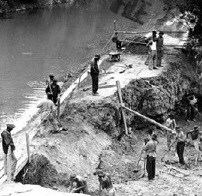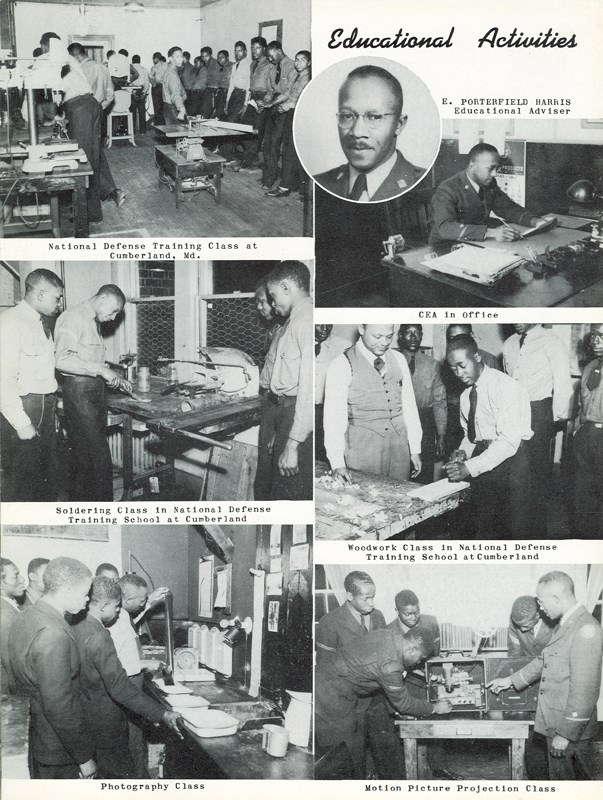
NPS Photo The Civil Conservation Corps (CCC) and the C&O CanalIn 1939, if you stood where the Carderock picnic pavilion now stands just outside the I-495 loop, you would have been in the center of Camp NP-2-Md., the bustling home of nearly 200 enrollees of the Civilian Conservation Corps (CCC). Young men, between the ages of 17 and 25, lived here year-round as they worked to provide for themselves and their families while restoring the first 22 miles of the Chesapeake and Ohio Canal as a national park. As part of CCC Company 333, each enrollee received dress and work uniforms, was assigned a bunk in a barracks, and received three meals a day. The enrollee's daily life was commanded by reserve officers of the United States Army. Their work projects were supervised by the National Park Service. Read more about the CCC at the C&O CanalThe legacy of the CCC at the C&O Canal is a rich history of hard work, perseverance, and early environmental stewardship. Read more about the important projects the CCC participated in and helped repair. The C&O Canal Trust PresentsRead more the C&O Canal and the CCC from our official Park Partner—the C&O Canal Trust.
The C&O Canal Owes a Lot to Black Workers of the CCCRead the Washington Educational Television Authority (WETA) article that discusses the significance of the CCC on the preservation of the C&O Canal, its infrastructures, and cultural resources. Reference 
NPS Photo NPS Story Map: A New Deal for the Canal and the Civilian Conservation CorpsWhat are your favorite "second chance" stories? The flood of 1924 that closed the C&O Canal and the historic flood of 1936 seemed to doom the canal to complete collapse. Purchased by the U.S. government in 1938, the canal was revived and restored by the Civilian Conservation Corps (CCC). From 1938 to 1941, these young African American men restored the damaged canal. Their work both in the canal and in the CCC classrooms built a loved National Historical Park and empowered them to develop the qualities of "cooperation, concentration, and dedication". 
Photo courtesy of the Western Maryland's Historical Library Civilian Conservation Corps (CCC)Allegany County, MarylandThe photographs depicted left are from a "pictorial review" of Company 335-C at Camp Green Ridge, Flintstone. Read More about the CCCThe Civilian Conservation Corps (CCC) was one of the New Deal programs established by President Franklin Roosevelt in 1933. Known as FDR's "tree army," these men did public improvements and conservation work across the country until 1942. Company 335-C (colored) of the CCC consisted of over 100 men and was stationed at Camp Green Ridge near Flintstone in Allegany County, Maryland. The camp featured a reading room, baseball team, basketball team, dispensary, education building, vocational shop, retreat, canteen, and camp quartet. Educational activities, much of which was undertaken in nearby Cumberland, included classes in woodworking, photography, motion picture projection, soldering, and more.
The Civilian Conservation Corps and the Student Conservation Association 

Left image
Right image
The Civilian Conservation Corps Across the National Park Service |
Last updated: November 15, 2021
